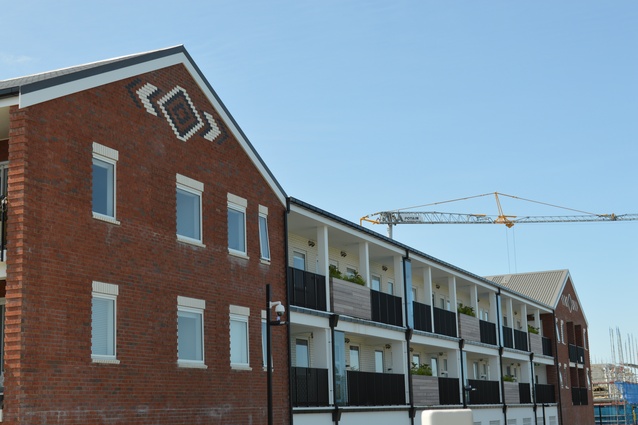Editorial: The shaping of Auckland’s future urban fabric
February 6: another year and another celebration of a treaty signed in 1840 by the Crown and Māori. Except perhaps for Newstalk ZB’s Mike Hosking’s cognitive dissonance in declaring it “our grievance day”, most commentators read this year’s mood as one of engagement and optimism, even though there’s much still to be done.
The prime minister and the leader of the opposition were there alongside a couple of sideshows – Don Brash and Destiny Church’s Brian Tamaki. Such is the rich tapestry of our national day.
This Waitangi Day brought to mind a meeting I’d had at the opening of stage one of Tuatahi in Mt Albert – Ockham Residential’s and the Marutūāhu Collective’s new apartment development. This collaboration speaks to the spirit of Waitangi Day but also to housing affordability and the shaping of Auckland’s future urban fabric. Made from a treaty settlement and built for the well-being of future generations, it is what I think can be called treaty architecture.
It had been more than a decade since I’d spoken to Paul Majurey, chair of the Marutūāhu Collective representing Ngāti Maru, Ngāti Pāoa, Ngāti Tamaterā, Ngāti Whanaunga and Te Patukirikiri iwi.
In 2006 and 2007, I was working on some articles for The New Zealand Herald about the battles Marutūāhu and other iwi of Tāmaki Makaurau were having in advancing their redress for the brutal taking of their land. The only iwi that seemed to be winning on this front was Ngāti Whātua Ōrākei. Majurey, a lawyer, was up against the orthodoxy – ‘the one-tribe myth’ – a belief spawned from the Bastion Point occupation protest days that there was just one tribe in Tāmaki Makaurau and that was Ngāti Whātua. Whenever Majurey, or other iwi such as Te Kawerau ā Maki, tried to advance their mana whenua status in Auckland, they were mostly ignored or told they were talking nonsense. Adding salt to the wound was the Crown, through the Office of Treaty Settlements, being on the brink of a massive settlement with Ngāti Whātua Ōrākei, which included large tracts of Auckland land and some of the city’s maunga (mountains) – land and maunga that Marutūāhu had long asserted were rightfully theirs.
During this period, I was privileged to observe the Waitangi Tribunal – a uniquely New Zealand institution that’s part court, part theatre, part hui and peculiarly convoluted – and the grindingly slow machinations of its flawed, yet heroic, hearings process in action. In 2007, much to everyone’s surprise, the Tribunal gave the Office of Treaty Settlements a slapping. Of the Tāmaki Makaurau settlement with Ngāti Whātua Ōrākei, which excluded other Auckland iwi, it said: “… the Crown’s policy and practice have been unfair, both as to process and outcome… this draft settlement really must be stopped in its tracks”.
The rest, as they say, is history reclaimed. In 2010, Majurey and representatives from 11 other iwi signed Ngā Mana Whenua o Tāmaki Makaurau – a framework agreement covering shared ownership of Auckland’s volcanic cones: a joint process for resolving claims and a shared ‘carousel’ right of first refusal process to buy surplus Crown land.
The effects of that report have been far-reaching – the 2014 establishment of the Tūpuna Maunga Authority, the co-governance entity for the region’s 14 maunga, currently chaired by Majurey and comprising multiple iwi representatives and Auckland Council. The Tribunal report also allowed other iwi to advance their Auckland claims, including the 2018 Pare Hauraki Collective settlement, which Majurey notes came 40 long years after the original Treaty claims work began.
It’s a settlement that’s shaping the city’s built form, as seen at Tuatahi where the Marutūāhu investment has literally made its mark on the brickwork façades and tiles of the complex’s swimming pool. Both feature tukutuku motifs from the iwi’s treasured Hotunui meeting house at the Auckland Museum.
How’s the orthodoxy now? Very different, says Majurey – the common mantra from the Council, its organisations and different tribal groups is that there are 19 mana whenua entities across the region.
Tuatahi is a copybook Ockham medium-density apartment development, which is close to public transport and disrupting another orthodoxy – that the high cost of land is the underlying cause of our housing crisis. With density like this, the land price issue disappears. For Ockham projects, land accounts for 8 to 12 per cent of the budget. At Tuatahi, the land cost per unit was about $40,000.
Majurey says he hopes Tuatahi is the first of many for Marutūāhu and Ockham projects – for now, a keeping-the-balance-sheet-healthy move to help fund future papakāinga and kaumātua housing. He speaks of a natural affinity with the folk at Ockham in terms of a long-standing approach and values and not a sausage factory of buildings being mass-produced. “They see the world very differently,” he tells me. “This is laying a platform for beautiful pieces of Auckland to be left behind for future generations.” What could be more Waitangi than that?
Chris Barton
Editor, Architecture New Zealand










